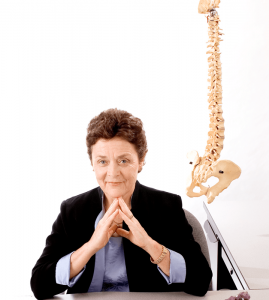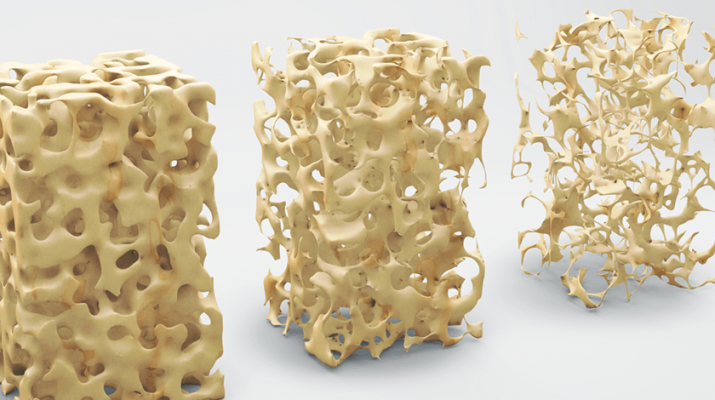Half of women 50 and older and 20% of men will break a bone because of osteoporosis at some point in their lives.
By Deborah Jeanne Sergeant

Numerous health organizations state that osteoporosis is widely under-diagnosed in older adults. Among them is the National Osteoporosis Foundation, which stated recently that it is “often left undiagnosed and untreated” despite its devastating consequences.
The foundation stated that breaking a hip often contributes to overall decline in health and physical condition and increases an elderly person’s risk of greater frailty, losing independence and living in a long-term care facility.
Half of women 50 and older and 20% of men will break a bone because of osteoporosis at some point in their lives.
Women are at greater risk for osteoporosis. Because its effects aren’t often recognized until a bone break occurs, few think to screen for it.
A woman’s risk of breaking her hip equals her combined risk of breast, uterine and ovarian cancer, according to the National Osteoporosis Foundation.
So why are older women more prone to osteoporosis than men?
“They’re a bit frail,” said Susan Brown, Ph.D, and certified nutritionist who directs the Center for Better Bones in East Syracuse. “Bone health is related to muscle health and muscle strength. We are a consumer advocate group so we encourage people to learn the signs of bone weakness. Did their mother break a bone?”
In general, women’s bones tend to be smaller and thinner than men’s. For this reason, Asian women have a higher risk of osteoporosis, as do those of any race with smaller-sized frames.
Lifestyle factors that disrupt nutrient absorption or weaken bones include lack of exercise, smoking, excessive alcohol and carbonated beverages. Medical issues include bulimia, anorexia, celiac disease, chemotherapy, and use of medication such as steroids and anti-seizure medication.
Once women hit menopause, the decline in bone-protecting estrogen declines, making them more prone to a broken bone.
Fortunately, women can do quite a bit to prevent and slow bone loss.
“We always say it’s never too late or too early to begin building bone,” Brown said.
Brown said that many women know about calcium, found readily in dairy, spinach, broccoli, dried beans and salmon. But 20 key nutrients affect bone strength, including vitamin D.
The body naturally generates vitamin D, a pre-hormone, when skin is exposed to sunlight. Just 10 to 15 minutes’ sun exposure twice a week suffices; however, Upstate New York doesn’t receive sufficient sunlight for several months of the year. That means deficiency is inevitable without supplementation. Eggs and oily fish varieties like salmon contain vitamin D. Few other foods naturally contain vitamin D, though commercially sold milk is fortified with it, as are many foods like breakfast cereal.
A nutrient-rich diet also promotes bone health.
“We don’t appreciate that though we have a very wealthy country, our health statistics aren’t that great,” Brown said. “Our diet is poor, even though we have plenty of food. We are under-nourished. We eat too much processed foods and few nutrient dense foods.
She cited studies that correlate high magnesium and potassium intake with lowered risk of bones breaking.
“The average American gets half the magnesium and potassium in what they eat,” Brown said. “We don’t eat as much real food anymore. There’s a mismatch between what we need and what we eat today. The body works best if you have the nutrients you need.”
“Get in the habit of doing exercises that are weight bearing, as will help build bone, along with strength training,” said Elizabeth Cullen, who has a doctorate in physical therapy and owns CNY Physical Therapy and Aquatics in Camillus and North Syracuse. “Doing these things cause the bone to form and build density. “
Walking, tennis, aerobics and yoga are all examples of weight bearing exercise. Swimming represents an example of a non-weight bearing exercise.
“Exercise is huge for affecting bone loss,” said John Mossotti has a bachelor’s degree in human performance and health promotion and owns Elite Personal Fitness in Camillus.
He said that one female client concerned about her bone scan.
“Added resistance helps the body respond by adding bone, Mossotti said. “It’s the body adapting to lifting those weights. Anyone strength training benefits in that way.”
Any woman concerned about her bone strength should discuss options with her healthcare provider as medication, along with lifestyle and dietary changes, can improve bone strength and help prevent breaks.

